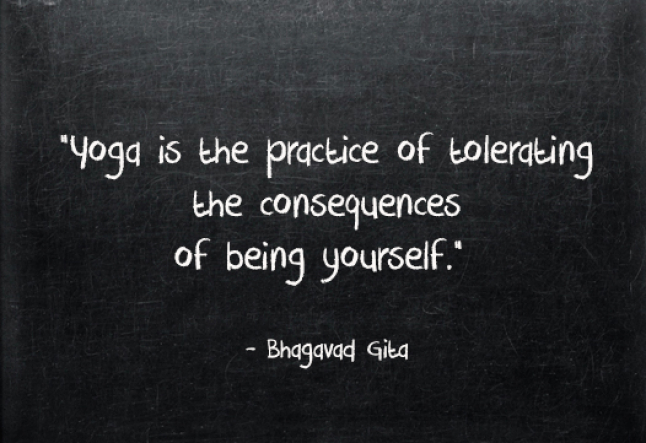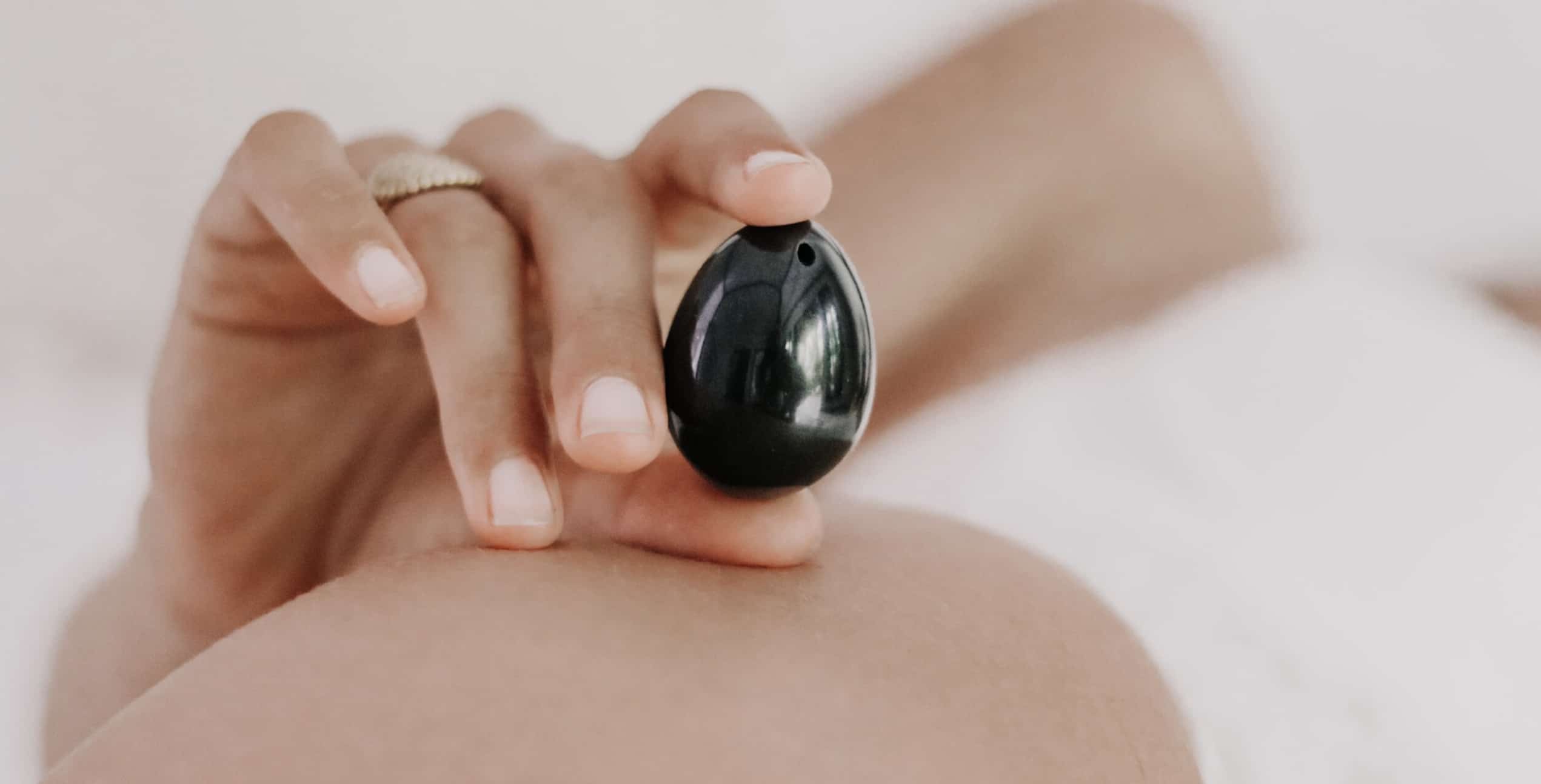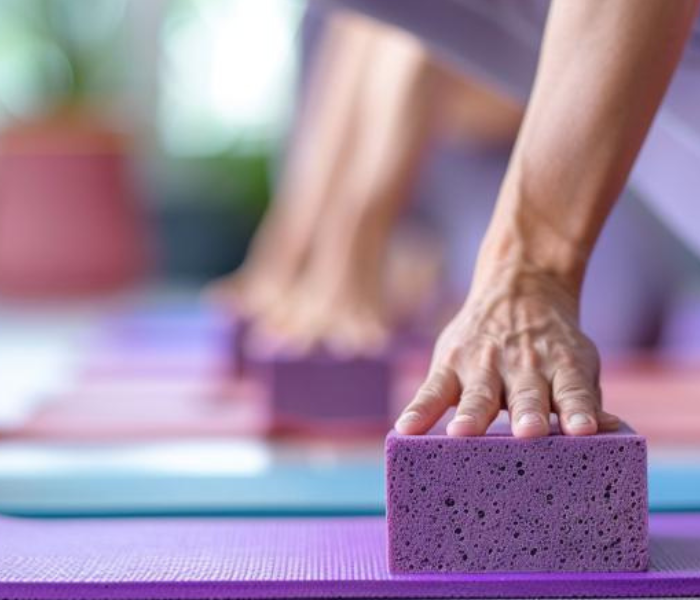the consequences of being myself

“Yoga is the practice of tolerating the consequences of being yourself.” – Bhagavad Gita
The consequences of being myself, huh? Sounds pretty damning if you ask me. My stream-of-thought reaction to this went something like this:
1. Self-defense “so now my yoga practice is judging me, too?”
2. Confusion “but wait, where’s the yummy, yogic, light-at-the-end-of-the-tunnel part?”
3. Dejection “well, this kind of sucks.”
For anyone who has come to their mat the morning after one too many drinks at your last vegan dinner party, you’re going to be smacked in the face with tolerating the consequences of being yourself.
I get that. I accept that. I made a decision and now I’m living with the consequences. Headstands aren’t fun when your head is ten times too big, Alice in Wonderland topsy-turvy style.
But what about the rest of the time? You know, when we’re good, diligent yogis who trade in judgement for compassion and happy hour for $9 juices? Well, I decided to conduct a little experiment.
With my newfound spring of free time (I left an unhappy job for a more colorful life), I resolved to track a cause-and-effect relationship in my daily practice: the level of tolerance I have with myself at the start of class and the quality of my practice.
These days, tolerance with myself is an effortful undertaking. Before you get worried, this isn’t as bad as it sounds.
When so much of your life is in flux, in a period of transition, it’s natural to feel fidgety with where you are, what you’re doing, and how you’re spending your time. This isn’t to say I’m not happy with myself, but lately,
I always feel like I should be doing just a little bit more.
For anyone who has a yoga practice and isn’t enlightened, you can relate to the treachery of coming to the mat feeling like you should do more. You know those classes, the classes you come in and you’re absolutely bursting out of your skin.
The classes when you fall out of every asana (even the “easy” ones), you’re irritated by the neighbor’s towel that keeps creeping over to your mat, your OM lasts three seconds because taking a slow, deep inhale is too much to ask, and savasana is spent contemplating the how Clare could actually fall in love with Juan Pablo, the funky smell of the new incense, your desperate need to pee, and how the hell the guy next to you fell asleep within the thirty seconds.
Don’t pretend like you don’t know what I’m saying.
Despite the sassy-pants I was wearing when I first read this quote, if I come to the mat personally unsettled, discontent, or existentially-ansy, I do have to tolerate being in that body for the next hour and fifteen minutes.
That can be a tall order. But seriously, my internal conversation in these classes can go something like: “Want to do tree pose? Too bad.
Think you’re so cool in crow? Should have put a blanket under that face.” Luckily, the opposite is just as true.
When I come fulfilled and content, a practice can flow like a dance and the hour can pass in five minutes.
But wait, there’s a caveat. In my investigation, I found it’s not as black and white as having a great practice when I’m happy or a restless practice when I’m bummed.
Striking the perfect balance of a fulfilled practice, I’ve found, necessitates the same sort of conditions required to achieve Flow.
In finding a state of Flow, one must nestle into that delicate middle-way straddling ease and challenge, boredom and hyper-attention, apathy and overt-attachment.
Similarly, my best practices do not come on the days when I’m blindly, blissfully, stretchy-pants, green-tea caffeinated, let’s do cartwheels around the room happy, nor do they come on hundredth-winter-storm warning, soggy socks, just waited in line for twenty minutes at Whole Foods unhappy.
Rather, those magical practices, the kind that make you forget you’re face planting while the rest of DC is cavorting in the sunshine, seem to crop up when
I’m perfectly tolerant of myself. I’ve had totally blissed-out, forget-my-cellphone-in-the-studio-because-I’m-that-high-on-practice kind of classes on technically terrible days.
Similarly, I’ve had fall-out-of-Warrior II classes after sunny, yummy, mindlessly bopping down the street to Pharrell Williams’ Happy kind of days. The difference?
A demonstration of patience and tolerance towards myself. Sure, tolerance probably has a positive correlation with happiness level, but perhaps in the same way that ice-cream sales positively correlate with shark attacks.
Who goes to the beach without ice cream?
Yoga is the practice of tolerating the consequences of being yourself.
It’s something you can’t fake, because you’re only kidding yourself. Be tolerant of others, be tolerant of yourself.
Check it out.
Read next >> The real purpose of yoga


